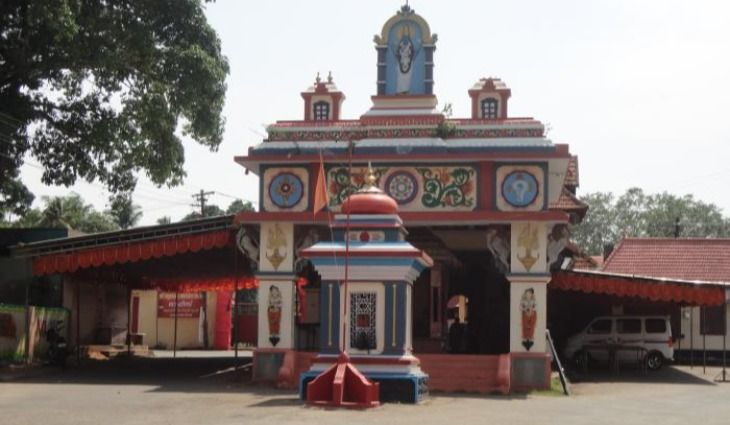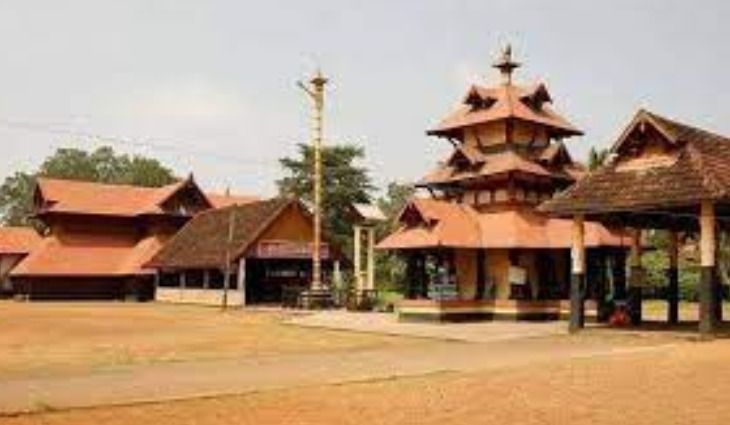Thiruvalla Sree Vallabha Temple
The Thiruvalla inscriptions say the temple for Sudarshana Chakra was built in 2998 BC. Another opinion is that the place was named after Sreevallabha temple as Sreevallabhapuram and Thiruvalla in colloquial Malayalam. The temple for Sudarshana Chakra was built by Sreedevi Antherjanam of Sankramangalathu Illam and it was elaborately rebuilt by Queen Cherumthevi in 59 BC. Sreevallabha temple flourished to a major spiritual and educational centre by AD 1100. The temple had governed a Vedic school (thiruvalla sala) with around 1500 students and 150 teachers. Veda, Vedanta, Tarka, Mimamsa, Jyotisha, Ayurveda, and Kalaripayattu were taught there. The temple also owned an Ayurveda hospital with facilities to admit and treat 100 patients at a time. Addressing lord Sreevallabhan by names Kolapiran, Thiruvazhmarvan and Sundarayan, the Tamil vaishnavite saints Nammalvar of the 5th century AD (2612-2622 in Divya Prabhandham) and Thirumangai Alvar of the 9th century AD (paasurams 1806-1817 in Divya prabhandham) had praised glory of the temple. Famous Sanskrit poet Daṇḍin (7th century AD) of Kanchi mentioned the temple in his works. The first ever prose work in Malayalam is the Thiruvalla inscriptions dated to the first half of the 12th century AD, which was obtained from the temple during 1915. The Unnuneeli Sandesam of the 13th century AD highlighted the grandeur, beauty, serenity, fame and status of the temple during its time. Other works that glorified the temple are Sreevallabha Ksethra Mahathmyam of the 10th century AD, Sreevallabha Charitham kavyam, Thukalasura Vadham Kathakali, Sreevallabha Charitham Kathakali, Sreevallabha Vijayam Kathakali, Sreevallabha Suprabhatham, Sreevallabha Karnamritha Sthothram, Yajanavali Sangrham etc.
From the date built, the temple was under control of Thiruvalla Pattillathil Pottimar (Brahmins of ten families) till 1752-1753. Sreevallabha Temple emerged out as a major spiritual destination for devotees all over India centuries before. It had 15 major priests (melsanthi) and 180 sub-ordinate priests (keezhsanthis) all the time and another 108 for only daily noon pooja. Temple provided staying and food facilities for all visitors, students, teachers etc. and also used to conduct annadanam (serving food to the poor) daily. Naivedyam of Lord Sreevallabhan for a single time used to be made from 45 para (one para can feed approximately 100 persons) rice. In all these years, temple acquired enormous amount of wealth, so much, that it even used to serve food in golden banana leaves and throw them considering as the leavings. It also had thousands of acres of land too which are lost now. During 1752-1753 Marthanda Varma of Travancore captured the temple from Pathillathil Pottimar, and it is believed that Ramayyan Dalawa looted whole temple assets to Thiruvananthapuram. Up to 1968, ladies and elephants were not allowed in the temple. The temple used to be opened for ladies only during Thiruvathira of dhanu month and Vishu of medam till then. Anyhow now this custom is not in practise. These facts clearly say that how popular and wealthy the temple was in those days.
Legends have their own space in relation with the history of a temple, but they should never be mixed up. While going through the legends related to Sreevallabha temple it is clear that even though Sreevallabhan’s idol is older, it was the temple for Sudarshana built first.
Before creation, while being in deep meditation at the origin of universe, Viratpurusha appeared to Brahma. Brahma understood the Lord as he could and later on continued worshipping Purusha in an idol created by Vishvakarma from energy concentrated out of extreme power and vehemence of Purusha. Upon request by Samudradeva (god of water) lord Brahma advised worship protocol of Purusha to him and handed over the idol. Later goddess Adi Parashakti takes birth as Samudradeva's daughter in the name Sreedevi (lakshmi,shree). Sreedevi worshipped the very same idol and lord Vishnu promised to marry her while she comes out during churning of the milky ocean in Satya Yuga. This eventually made Vishnu to be known as sreevallabhan (sree-lakshmi, vallabhan-husband) and the goddess incorporated her power also to the idol. Later Vishnu married Lakshmi as he promised.
After the churning of milky ocean, sage Durvasa was upset due his own wrathful nature which led to the whole incidents. He sought advice of his father, lord Shiva who directed Durvasa to lord Brahma for getting the knowledge of Parabrahmam. Brahma advised the same as he did to Samudradeva and asked him to worship the Lord. Durvasa along with 63 disciples reached the Earth and found a suitable place and named it as Mallikavanam (forest of jasmines). Durvasa did tapas beneath jointly growing mango and sacred fig. Later in Treta Yuga, the Lord appeared to the sage. As lord Vishnu appeared, water sprouts rushed out of earth and Durvasa washed the Lord's feet with it. Pleased with the sage's devotion, Vishnu promised to be present at the spot forever on a condition that the sage should do his service whenever he appear in a form that can be visualized by all. (The spot where Durvasa meditated is south-west to the temple and the water sprouts turned into a tank, Jalavanthy).
In spite of being son of lord Shiva, Khandakarnan was a horrible ogre who used to sacrifice animals to please Shiva and never missed any chance to humiliate Vishnu. He had a pair of bells as ear rings so that he can hear only the name of Shiva what he used to chant always. As he didn't get salvation even after long time, he asked Shiva for its reason. Shiva decided to teach him both Shiva and Vishnu are same advised him to worship Vishnu. Directed by Durvasa, Khandakarnan reaches Mallikavanam. There he took bath in Jalavanthy and threw away his ear rings and got a new pair so that he can hear only the name of Vishnu thereafter. During Dvapara Yuga, Vishnu appeared in front of him as Sreevallabhan and he got salvation. By this, Jalavanthy became famous by the name Khandakarna Theerthem.
Soon after the construction of Dvaraka, Samudradeva gifted many precious things including Sreevallabhan's idol to Krishna. Krishna handed it over to his friend Satyaki saying “there is nothing in the world for Vishnu pooja like Sreevallabhan’s idol. Worshipping Vishnu directly and worshipping this idol are the same always. It has got the power to wash away even sins accumulated through ages”. Satyaki asked Krishna's permission for building a temple and celestial architect Vishvakarma constructed the biggest temple in Dvārakā. Sage Vedavyasa installed the idol and Durvasa advised worship protocol. During the end of Dvapara Yuga, Sathyaki handed over the idol to Garuda and asked to keep it safe for the use of humans in Kali Yuga. Garuda went to Ramanaka Island and worshipped it there. Worship of the idol made Garuda free from all his curses. When the time for Garuda to leave the earth reached, he had hidden the idol in the Bhadra deep of Netravati River (in present-day Dakshina Kannada dist., Karnataka)
Location
Thiruvalla
Main Deity
Sreevallabhan (Lord Vishnu)
Other Deities
Festivals
Thiru Utsavam and Uthra Sreebali.
Main Offerings
Paala Namaskaaram, Kathakali, Pantheerayiram and Kesadipaadam Garland
How To Reach
Situated 750 meters south to Ramapuram vegetable market and 500 meters south to Kavumbhagom junction on Thiruvalla–Ambalappuzha State Highway (SH-12), Sreevallabha temple is just 2.5 kms away from Thiruvalla railway station and 2 kms from KSRTC bus stand.



